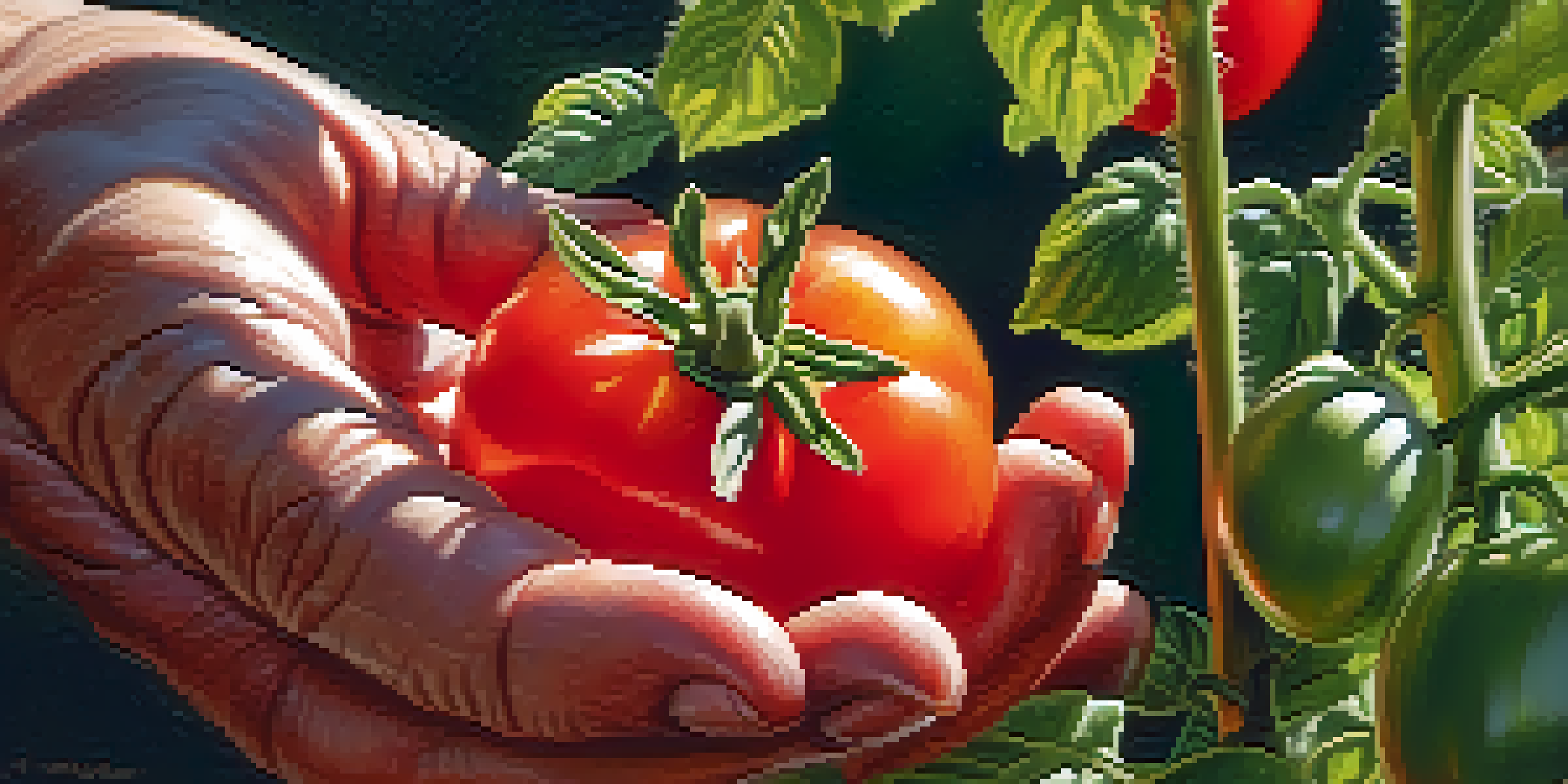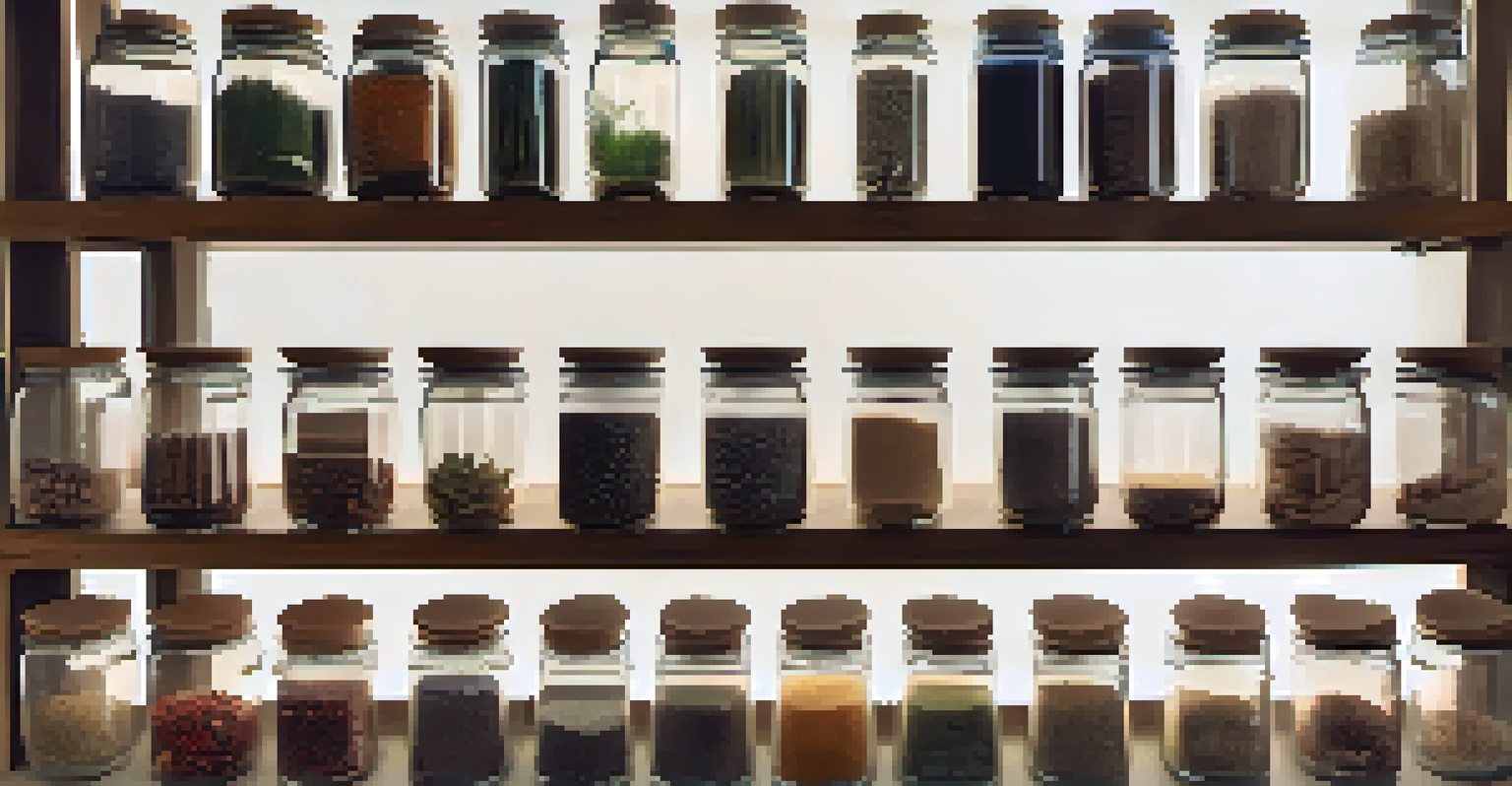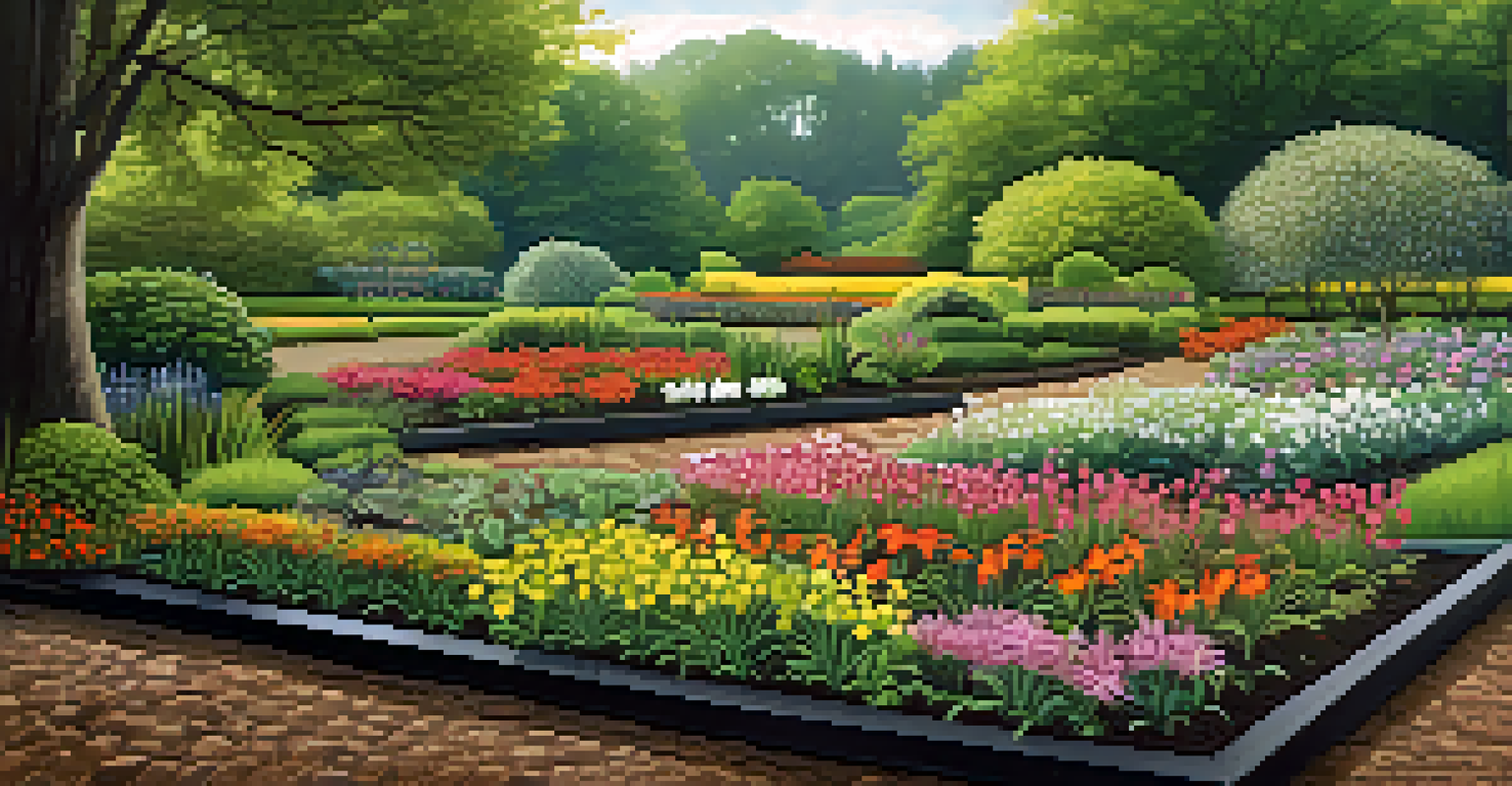Seed Saving: Preserve Your Favorite Varieties for Future Use

Understanding Seed Saving: What It Is and Why It Matters
Seed saving is the practice of collecting and storing seeds from your best plants for future planting. This age-old tradition not only helps preserve specific plant varieties but also promotes biodiversity in your garden. By saving seeds, you are ensuring that you always have access to your favorite crops, even as commercial seed sources may change over time.
The greatest fine art of the future will be the making of a comfortable living from a small piece of land.
Moreover, seed saving can be a sustainable choice for gardeners looking to reduce their reliance on store-bought seeds. It allows you to cultivate plants that are well-adapted to your local growing conditions, which can lead to healthier, more resilient crops. Think of it as having a personal seed bank, tailored to your gardening needs.
In a world where many plant varieties are becoming endangered, seed saving can play a critical role in conservation efforts. By preserving heirloom and open-pollinated seeds, you contribute to the genetic diversity of our food systems and help protect these varieties for future generations.
Choosing the Right Seeds: Heirloom vs. Hybrid
When starting your seed-saving journey, it's essential to understand the difference between heirloom and hybrid seeds. Heirloom seeds are open-pollinated varieties that have been passed down through generations, retaining their unique characteristics. In contrast, hybrid seeds are created by cross-breeding two different parent plants, which can result in desirable traits but may not produce the same quality in subsequent generations.

For successful seed saving, focus on heirloom varieties, as they will reliably produce seeds that grow true to type. This means that if you plant the seeds you save, they will produce plants very similar to their parent. If you're growing hybrid plants, you might find that their seeds lead to unpredictable results, which can be frustrating.
Seed Saving Preserves Biodiversity
By collecting and storing seeds from your best plants, you contribute to the conservation of unique plant varieties and promote genetic diversity.
Choosing to grow heirloom seeds not only ensures the continuity of specific varieties in your garden but also allows you to experiment with unique flavors and colors that may not be available in commercial seed packets. Plus, many heirloom varieties have fascinating histories, adding a story to your gardening experience.
How to Collect Seeds: Timing and Techniques
The key to successful seed saving lies in knowing when and how to collect seeds. Timing is essential; seeds should be harvested when they are fully mature, which varies depending on the plant type. Look for visual cues, such as browning seed pods or dried flowers, as these indicate that the seeds are ready to be collected.
To forget how to dig the earth and to tend the soil is to forget ourselves.
Once the seeds are ready, use clean scissors or pruning shears to snip the seed heads or pods. Be gentle to avoid damaging the plant or the seeds themselves. After harvesting, allow the seeds to dry completely in a cool, dark area before storing them. This step helps prevent mold and ensures their longevity.
Different plants have unique seed collection methods. For example, tomatoes require you to ferment the seeds to remove the gel coating, while beans can simply be harvested and dried. Familiarizing yourself with the specific techniques for your chosen varieties will make the process smoother and more effective.
Cleaning and Preparing Seeds for Storage
After collecting your seeds, it's crucial to clean and prepare them for storage to ensure their viability. Start by removing any debris, such as dried plant material or chaff, which can harbor pests and diseases. Gently rub the seeds in your hands or use a fine mesh sieve to separate them from unwanted material.
Next, consider treating your seeds with a mild solution of water and hydrogen peroxide to further disinfect them. This step can help eliminate any potential pathogens that might affect germination. Rinse the seeds thoroughly after treatment and allow them to dry completely, as moisture can lead to mold growth during storage.
Heirloom Seeds Ensure True Growth
Focusing on heirloom seeds allows gardeners to save seeds that will produce plants similar to their parent, ensuring reliable growth and unique flavors.
Once cleaned and dried, storing seeds in a cool, dry place is essential for maintaining their viability. Use airtight containers, such as glass jars or vacuum-sealed bags, to protect them from moisture and pests. Label each container with the plant variety and date collected, making it easy to track your seed stash throughout the seasons.
Optimal Seed Storage Conditions for Longevity
To keep your saved seeds viable for as long as possible, it's important to store them under optimal conditions. Ideally, seeds should be kept in a cool, dark, and dry environment. A temperature range of 32°F to 41°F (0°C to 5°C) is often recommended for long-term storage. A refrigerator or a climate-controlled basement can be ideal choices.
Humidity plays a significant role in seed longevity as well. The lower the humidity, the better for seed storage, as excess moisture can lead to mold and decrease germination rates. Using silica gel packets in your storage containers can help absorb any moisture and maintain a stable environment for your seeds.
Regularly check on your stored seeds, especially if you're keeping them for several years. Conduct a germination test by planting a small sample to ensure they remain viable. This way, you can keep track of which varieties still have good germination rates and plan your planting accordingly.
Planting Saved Seeds: Best Practices for Success
Once spring arrives, and it's time to plant, you'll want to ensure your saved seeds germinate successfully. Start by preparing your soil properly, as healthy soil leads to healthy plants. Incorporate organic matter, such as compost, to provide nutrients and improve soil structure, setting the stage for your seeds to thrive.
Before planting, consider soaking your seeds in water overnight, which can help kickstart the germination process. This step is particularly useful for hard-shelled seeds, as it softens the seed coat and encourages sprouting. After soaking, plant the seeds at the recommended depth for each variety, and keep the soil consistently moist.
Optimal Storage for Seed Longevity
Storing seeds in cool, dry conditions helps maintain their viability, ensuring successful planting for future seasons.
As your plants grow, provide them with the care they need, such as adequate sunlight, water, and nutrients. Keep an eye out for pests and diseases, and be prepared to take action if needed. By nurturing your plants from saved seeds, you’ll enjoy the fruits of your labor while also ensuring a new generation of seeds for the next planting season.
The Joy of Seed Saving: Connecting with Nature
Seed saving is more than just a gardening practice; it's a way to connect with nature and appreciate the cycle of life. Each time you save seeds, you cultivate a deeper relationship with your plants and the environment around you. It encourages mindfulness, as you observe your plants’ growth and development throughout the seasons.
Moreover, sharing saved seeds with friends and neighbors fosters community and strengthens bonds over a shared love of gardening. You can exchange heirloom varieties, swap tips on growing techniques, and even share delicious recipes featuring your homegrown produce. This aspect of seed saving adds a social layer to the experience, making it more rewarding.

Ultimately, seed saving is a celebration of biodiversity and sustainability. By preserving your favorite varieties, you contribute to the health of our planet while enjoying the unique flavors and experiences that come from growing plants with a story. So grab those seeds and get started—your garden and future generations will thank you!